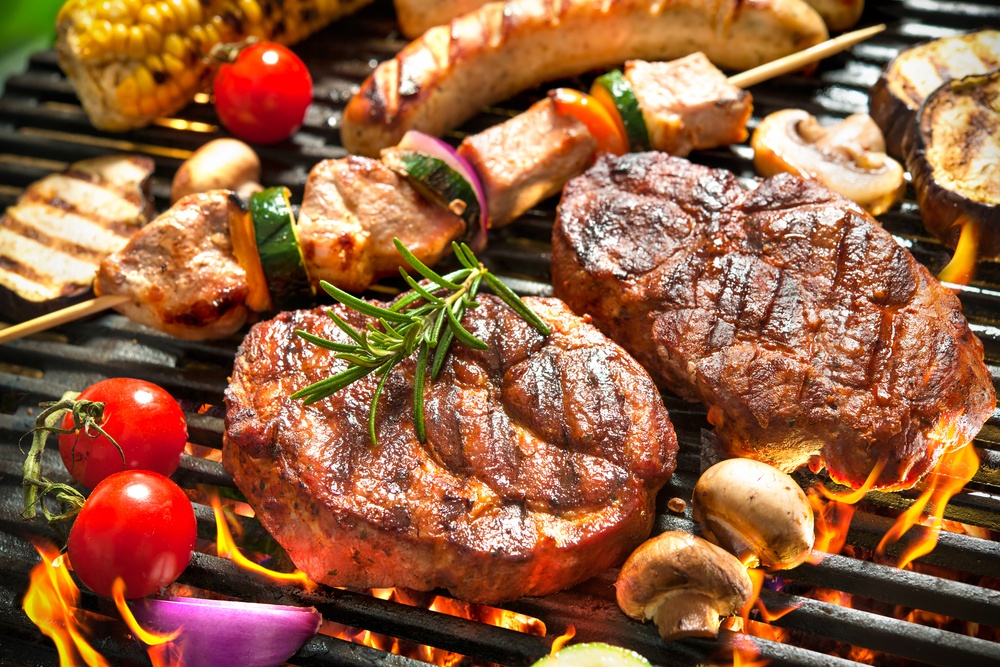Which Of These 5 Proteins Is Best For You?
 Contributed by
Su Lee Chong
May 27, 2016
Contributed by
Su Lee Chong
May 27, 2016

Protein is a very important component of a healthy diet. Our bodies need protein for the repair and regeneration of muscles and other tissues. The production of hormones, enzymes and hemoglobin requires protein. Protein is also an excellent source of energy.
Protein is a big molecule made up of small units called amino acids. There are 20 different types of amino acids needed to form different types of proteins for various body functions. There are three categories of amino acids:
- Non-essential amino acids– our body manufactures them.
- Essential amino acids– our body does not manufacture them and we need to obtain them from food.
- Conditional amino acids– our body needs them during times of illness or stress.
Most of the food we eat will provide us with some source of protein, but which is the best protein source? Here are the main types of protein in our diet:
Animal Protein
This is a complete protein containing all the essential amino acids. However, the risk of eating animal protein is that it has a high saturated fat and cholesterol content, which increases the risk of heart disease. Animal protein contains sulphur-containing amino acids, which increase the risk of osteoporosis.
Based on the saturated fat content, the best choice of animal protein is fish, followed by poultry. Red meat from beef, lamb and pork is the least. Eat them less often but if you should eat them, choose red meat from lean cuts.
Plant Protein
Most of plant-based protein is lacking in one or more essential amino acids. However, it is low in fat and cholesterol but high in phytochemicals and minerals, as well as fiber. Eating more plant protein, for example, lentils, quinoa, nuts, and beans reduces the risk of heart disease and improves your immune system.
Soy Protein
Soy protein is a complete protein containing all the essential amino acids, and is also high in Branch Chain Amino Acids (BCAA). BCAA is important for stimulating the building of protein in muscle and preventing muscle breakdown. Soy protein reduces lipids in the blood, stimulates the breakdown of bad cholesterol and reduces blood pressure. It also contains phytosterols, which are powerful antioxidants.
Dairy Protein
Milk protein is 80% casein and 20% whey protein. Whey protein is the translucent part of milk that remains following the process of cheese manufacturing. The manufacturing process removes lactose and fat, which makes it suitable for people who are lactose intolerant. Whey protein is easily absorbed (about 61%) because it is broken down during the manufacturing process.
Casein protein is the component that produces the white colour of milk. It contains calcium and phosphorus, as well as BCAA. Casein is best for protein synthesis for a prolonged duration because it is slow absorbing (about 31%) and releases amino acids slowly.
Colostrum
Colostrum is a form of milk protein produced by mammals just before giving birth. It contains antibodies to protect the newborn against diseases. It also contains growth factors to promote cellular growth and synthesis of genetic materials (DNA).
Which Protein Is The Best?
One method of determining the quality of a protein is the Protein Digestibility Corrected Amino Acids Score (PDCAAS). It is a score representing the amino acid requirement of our bodies, as well as how effectively the body can digest and absorb it. A score of one is the best and complete, while less than one means some amino acids are missing.
The US Food and Drug Administration (FDA) and World Health Organization (WHO) in 1993 adopted the PDCAAS as the preferred method to determine the quality of protein. Milk protein, egg white, soy protein, whey protein, and most meats have a score of one. Beef has a lower score because of the high content of tendon and collagen within the meat and they do not contain much amino acid.
As mentioned earlier, while the PDCAAS score for most animal protein is one, there are risks for eating too much animal protein. On the other hand, plant protein has many benefits without the risks of animal protein, but it is not complete.
The American Heart Association guideline recommends that five to six servings of whole grains, and five or more servings of fruit and vegetables would supply all the essential amino acid necessary for good health.
Go ahead and take charge of your health by increasing your plant-protein intake.
Visit Look Good Feel Great Always to find out more about Su Lee’s work.
This post was first published on Look Good Feel Great Always blog and has been reposted on Executive Lifestyle with the permission of the author.
Edited by Nedda Chaplin
Image credit: Assorted delicious grilled meat with vegetable from Shutterstock
Did you enjoy this post? Please comment, like and share!











Sorry, the comment form is closed at this time.